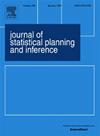Sparse multiple kernel learning: Minimax rates with random projection
IF 0.8
4区 数学
Q3 STATISTICS & PROBABILITY
引用次数: 0
Abstract
In kernel-based learning, the random projection method, also called random sketching, has been successfully used in kernel ridge regression to reduce the computational burden in the big data setting, and at the same time retain the minimax convergence rate. In this work, we consider its use in sparse multiple kernel learning problems where a closed-form optimizer is not available, which poses significant technical challenges, for which the existing results do not carry over directly. Even when random projection is not used, our risk bound improves on the existing results in several aspects. We also illustrate the use of random projection via some numerical examples.
稀疏多核学习:随机投影的最小率
在基于内核的学习中,随机投影法(又称随机草图法)已成功应用于内核脊回归,以减轻大数据环境下的计算负担,同时保留最小收敛率。在这项工作中,我们考虑将其用于稀疏多核学习问题中,因为在这些问题中没有闭式优化器,这带来了巨大的技术挑战,而现有的结果并不能直接用于这些问题。即使不使用随机投影,我们的风险边界也在多个方面改进了现有结果。我们还通过一些数值示例说明了随机投影的使用。
本文章由计算机程序翻译,如有差异,请以英文原文为准。
求助全文
约1分钟内获得全文
求助全文
来源期刊
CiteScore
2.10
自引率
11.10%
发文量
78
审稿时长
3-6 weeks
期刊介绍:
The Journal of Statistical Planning and Inference offers itself as a multifaceted and all-inclusive bridge between classical aspects of statistics and probability, and the emerging interdisciplinary aspects that have a potential of revolutionizing the subject. While we maintain our traditional strength in statistical inference, design, classical probability, and large sample methods, we also have a far more inclusive and broadened scope to keep up with the new problems that confront us as statisticians, mathematicians, and scientists.
We publish high quality articles in all branches of statistics, probability, discrete mathematics, machine learning, and bioinformatics. We also especially welcome well written and up to date review articles on fundamental themes of statistics, probability, machine learning, and general biostatistics. Thoughtful letters to the editors, interesting problems in need of a solution, and short notes carrying an element of elegance or beauty are equally welcome.

 求助内容:
求助内容: 应助结果提醒方式:
应助结果提醒方式:


